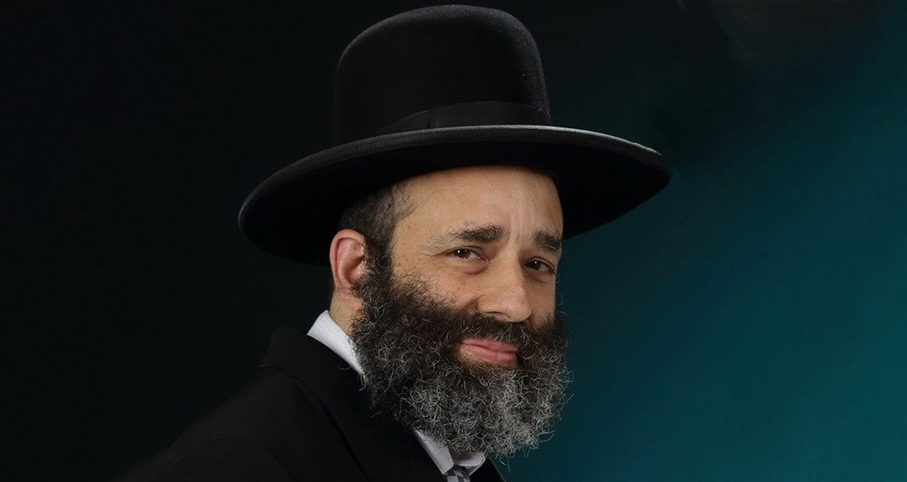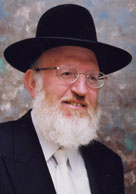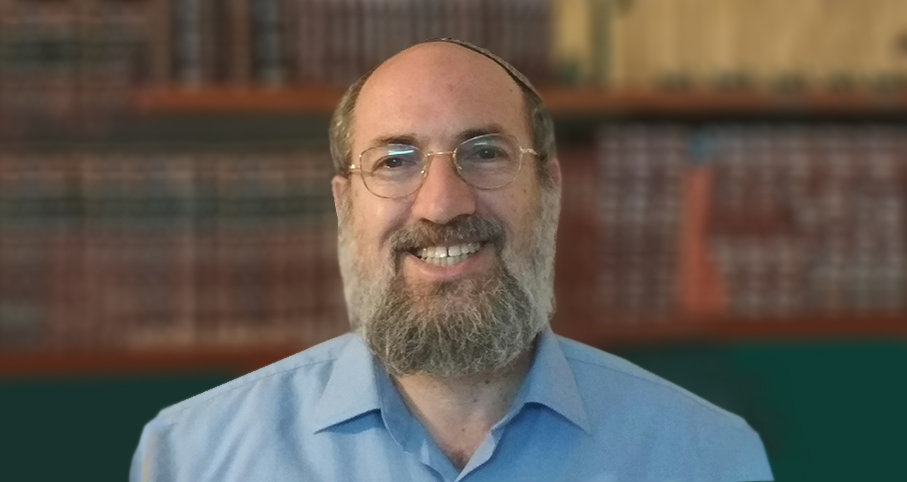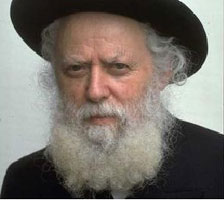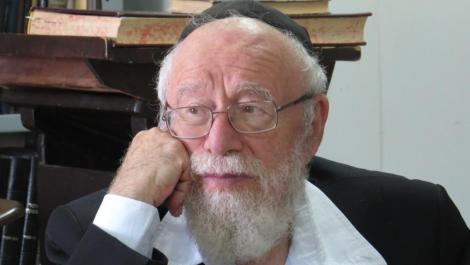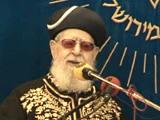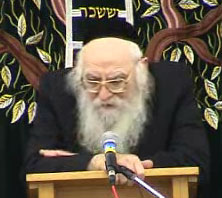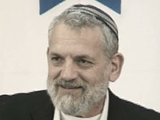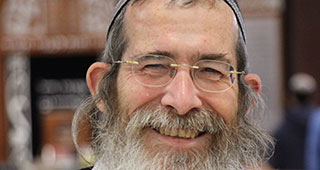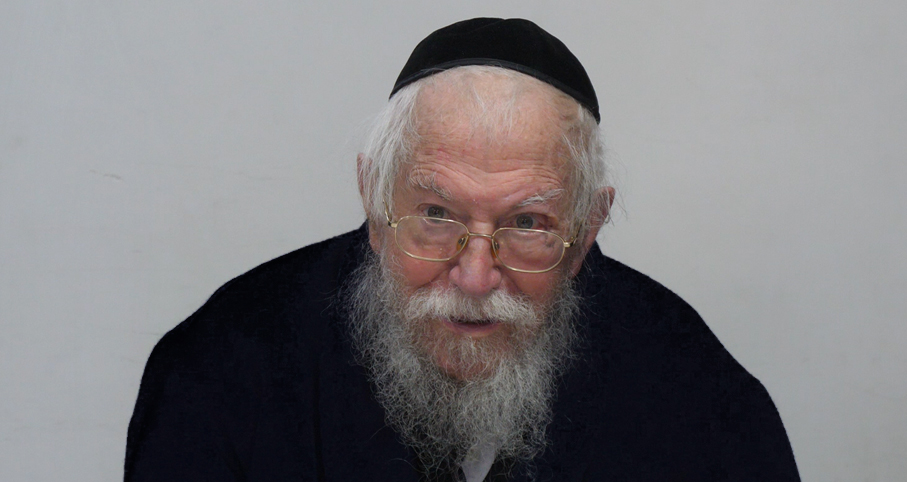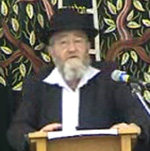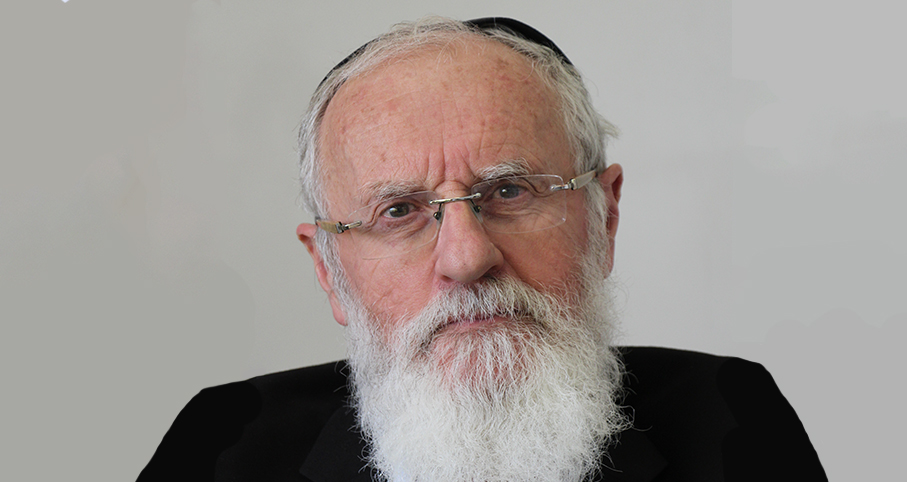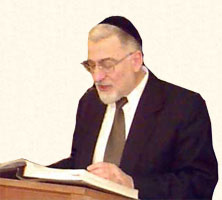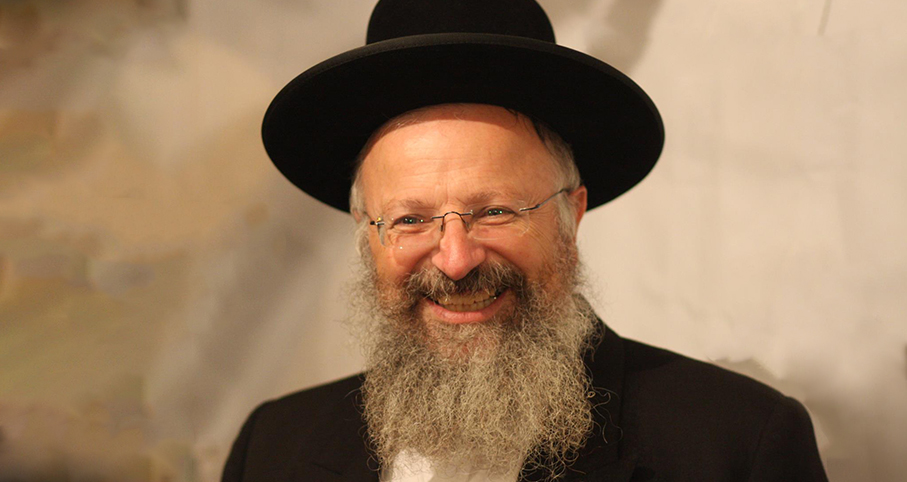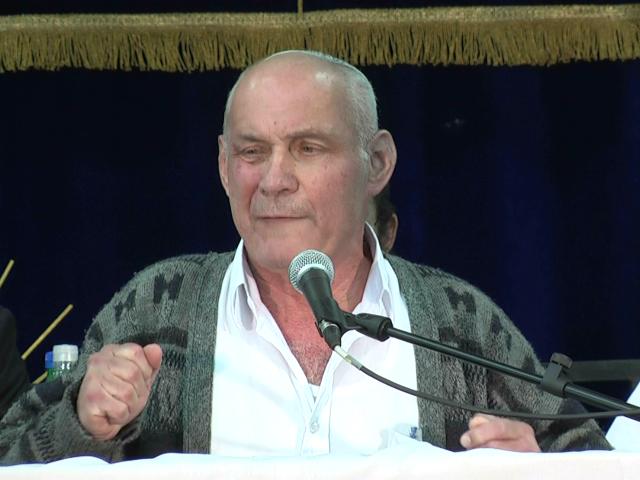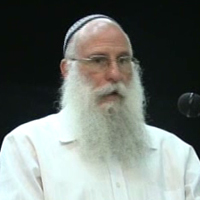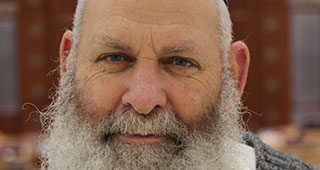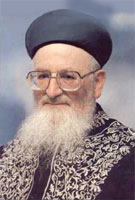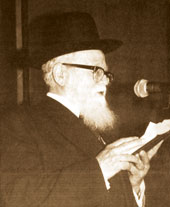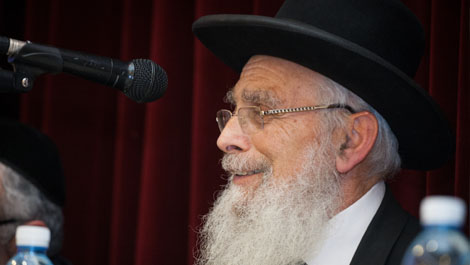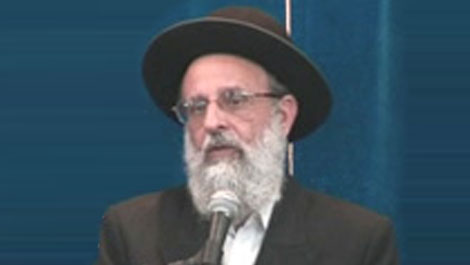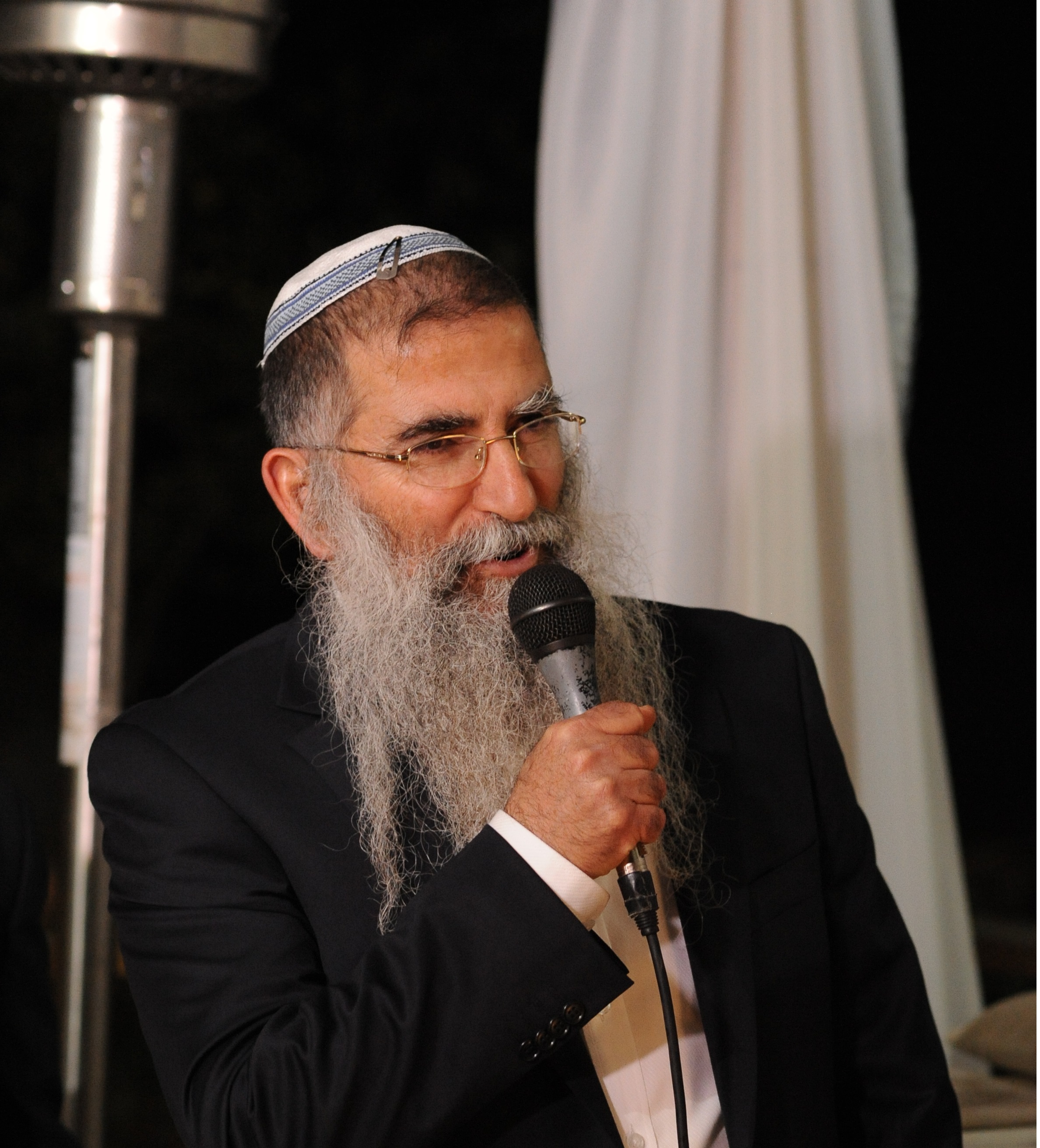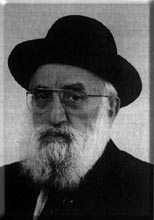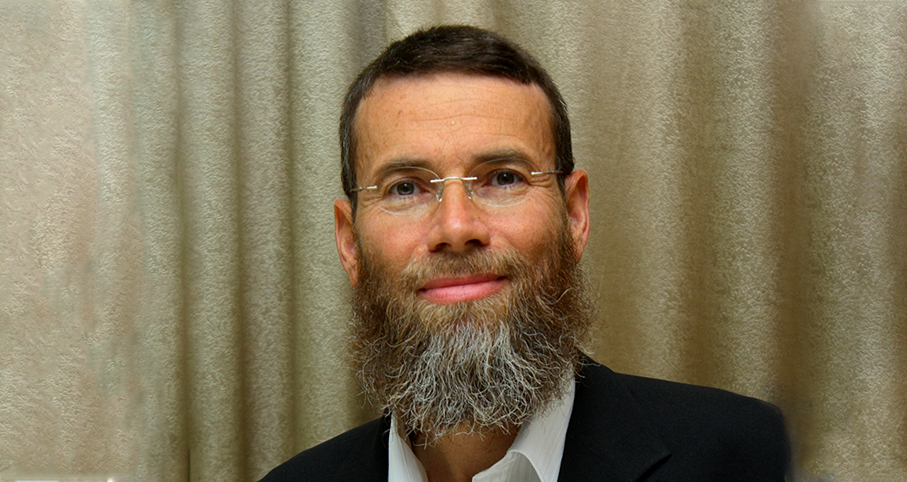Beit Midrash
- Jewish Laws and Thoughts
- Prayer
- Jewish Laws and Thoughts
- Prayer
- The Reading of the Torah
Why is Kaddish in Aramaic? Isn’t it prohibited to pray in Aramaic and Arabic?
Question #2: Doing it right
In which arm does a lefty hold the sefer Torah?
Question #3: Caught in the act
Do I join everyone in reciting Berich She’mei when I am in the middle of pesukei dezimra?
Background
The structure of most of our prayers, including the Shemoneh Esrei and the berachos we recite surrounding the Shema, was created by the Anshei Keneses Hagedolah, 120 great leaders of the Jewish people who lived during the beginning of the second Beis Hamikdash. Many of these leaders had been exiled to Babylonia before the destruction of the first Beis Hamikdash. This venerable group included such great leaders as Ezra, Mordechai, Nechemiah, Daniel, Chanaya, Mishael, Azaryah, Zerubavel, Shimon Hatzadik (of the famous story with Alexander the Great), Chagai, Zecharyah and Malachi (the last three prophets of the Jewish people). The Anshei Keneses Hagedolah authored and edited the last volumes of Tanach and organized it into its final form (Baba Basra 14b-15a).
Perhaps one way to recognize how great the leaders of this generation were is by realizing that Mordechai, whom we all knows was a great gadol, was not the greatest of his generation. All agree that this distinction belongs to Ezra.
Chazal tell us that Ezra was so great that he should have returned to Eretz Yisrael accompanied by the same types of miracles that occurred when Yehoshua led the Bnei Yisrael into Eretz Yisrael. Then, the Bnei Yisrael experienced many overt miracles including what happened when the Jordan River was crossed, when Yericho was conquered, and when the Canaanite kings were eliminated (Berachos 4a). Unfortunately, the Jewish people in the days of Ezra were not on a high enough level to warrant such miracles, but the statement of Chazal provides an appreciation for the greatness of their leaders.
Ezra, fully aware of the problems that Kelal Yisrael faced in so many major areas -- from intermarriage (see Ezra, Chapter 9), to Shabbos observance (see Nechemiah, Chapter 13), to knowledge of the laws germane to the Beis Hamikdash (see Chaggai, Chapter 2; Pesachim 17a) -- instituted many takanos to assist the rebirth of the Jewish community in Eretz Yisrael in his time (Bava Kama 82a). Among the many improvements he made was adding to the takanah made by Moshe Rabbeinu to read the Torah three times every week. After Ezra’s additions to this takanah, three people are called up every time the Torah is read, and it is read also at Mincha on Shabbos. Thus, in his day, the practice of reading the Torah already resembled the way we fulfill this mitzvah.
Berich She’mei
In the article I sent last week, I discussed some of the halachos and customs that we observe when we remove the sefer Torah from the aron hakodesh. We discussed the beautiful Aramaic prayer that begins with the words Berich She’mei. This prayer, whose source is in the Zohar (Parshas Vayakheil #206a\#225), was written by Rabbi Shimon bar Yochai, the author of the Zohar, the tanna quoted all over the Mishnah and Gemara simply as Rabbi Shimon, whose burial place on Har Meiron is the focus of much celebration, poetry, and three-year olds’ haircuts on Lag Be’Omer.
Bowing during Berich Shemei
In many communities, the custom is to bow before the sefer Torah when reciting the words desagidna kamei, "When I bow before Him," during Berich She’mei. The authorities dispute whether this custom is proper. The Riaz, a rishon, is among those who contend that one should not bow other than to Hashem, not even toward the aron hakodesh or a sefer Torah (quoted by Shiltei Hagiborim, Kiddushin 14b note #1 and by Keneses Hagedolah, Yoreh Deah 282). Rav Yisrael Binyamin, an esteemed 16 th century posek, also questioned this practice, contending that it might be forbidden because of the prohibition of worshipping idols (see Shu’t Ohalei Yaakov #57)!
The Kaf Hachayim concludes that we should not bow during Berich She’mei, since bowing when the sefer Torah is taken out is not mentioned in the Gemara, and the Gemara rules that we are to bow at specified points during the Shemonei Esrei – and not at any other time. This position is well-known as the opinion of the Vilna Gaon, who contended that we should not bow anywhere except when dictated by Chazal, not only during the Shemoneh Esrei, but also during such prayers as Kaddish and Aleinu (Biur Hagra, Orach Chayim 56:10).
On the other hand, the Maharikash, a highly respected 16 th century posek, rules that it is correct to bow before the sefer Torah (Shu’t Ohalei Yaakov #57), because otherwise we are stating something untruthful when we declare (while saying Berich She’mei) desagidna Kamei -- that we bow to Hashem but we do not. The Chida accepts this conclusion (Birkei Yosef, Orach Chayim 134:3), which is subsequently followed by Rav Ovadyah Yosef (Shu’t Yabia Omer, Volume 5, Orach Chayim #8) who explains that bowing towards the sefer Torah is a sign of respect to Hashem, just as standing up for a sefer Torah is. This latter distinction is expressly opposed by the Riaz, who contends that it is required to stand up for a sefer Torah, but prohibited to bow to it.
A similar discussion is applicable regarding bowing when reciting Aleinu. Our custom is to bow when we say the words va’anachnu kor’im umishtachavim umodim¸ in which we say that we bow to Hashem. (Sefardim recite a shorter version here: va’anachnu mishtachavim.) Again, if we do not bow when we say these words, it appears as if we are being hypocritical and untruthful – we claim to be bowing, but we aren’t!
Language
Much halachic literature is devoted to the fact that Berich She’mei is recited in Aramaic. In general, we discourage prayers in Aramaic, although there are major exceptions, such as Yekum Purkan, some selections in our selichos, and, of course, Kaddish. Some even question why we sing the beautiful Shabbos zemer, Kah ribbon alam, written in Aramaic by the great posek and mekubal, Rav Yisrael Najara, which includes prayers and requests (Shu’t Har Tzvi, Orach Chayim #64). (By the way, there is no mention of Shabbos in Kah ribbon alam, and some Sefardim recite it as part of the daily davening, somewhat similar to the way we say Adon Olam or Yigdal.)
No Aramaic
The Gemara states that a person should not request from Hashem in the Aramaic language when he is praying by himself (Sotah 33a; Shabbos 12b). Many reasons are offered to explain this ruling (Elyah Rabbah 101:9); a more in-depth study of this topic will be postponed to a future date. For our purposes, I will share three approaches to the question, since there is an interesting halachic ramification that results.
A. Aramaic was viewed as a type of pidgin Hebrew, and therefore not acceptable for dignified procedures, such as davening (Ma’adanei Hamelech). As some authorities note, Arabic is also considered a slang offshoot of Hebrew, and, therefore, it would be prohibited to daven in Arabic, in private (Elyah Rabbah 101:9).
B. In the days when Aramaic was the common spoken language, there was concern that if Jews prayed in Aramaic, they would forget whatever Hebrew they still maintained (Tamim Dei’im, quoted by Elyah Rabbah 101:9).
C. Hashem made certain that the angels do not understand Aramaic, so that they would not get jealous of some of the beautiful Aramaic prayers we recite (Tosafos, Berachos 3a s.v. Ve’onin; Be’er Sheva, Sotah 33a).
According to the second and third reasons I cited, an individual could pray in Arabic, but not in Aramaic, whereas, according to the first reason, he should not pray in Arabic either.
We should also note that, since the prohibition against praying in Aramaic is only when praying privately, two of the three prayers we have mentioned, Kaddish and Berich She’mei, are not concerns, since they are recited only with a tzibur.
Reciting Berich She’mei during pesukei dezimra
What should someone do if he is in the middle of reciting pesukei dezimra when the sefer Torah is taken out? Should he recite the prayer of Berich She’mei, or does this constitute a prohibited interruption? Rav Shimon Greenvald, a greatly respected authority in pre-war Hungary, was asked this question, ruling that our davener should not interrupt pesukei dezimra to join the tzibur for Berich She’mei or any of the other prayers recited when the sefer Torah is taken out (Shu’t Maharshag 1:52:2). However, if he has completed the brocha of Yishtabach and has not yet begun the brocha of Yotzeir Or, nor has he yet answered Borchu, he may recite Berich She’mei and the other prayers, together with the tzibur (Shu’t Yabia Omer, Volume 5, Orach Chayim #8).
The reason for this ruling is that, although it is prohibited to interrupt between Yishtabach and Borchu, a very important matter may be performed at this time, and it is better to do it at this point in the davening than during the alternative options. For example, someone who did not have tzitzis or tefillin available before davening, or it was too early, then, for him to put them on, should put them on immediately after Yishtabach and, at that time, recite the appropriate berachos.
The basis for this is found in earlier authorities, who discuss whether mitzvah requirements or community needs are permitted to be discussed between Yishtabach and Borchu. The Tur (Orach Chayim 54) rules: "One may not interrupt between Yishtabach and Yotzeir, unless it is for community needs or (to solicit) for someone who needs to be supported from charity." The Rema discusses this question at length (Darchei Moshe, Orach Chayim 54:1) and codifies the ruling of the Tur in his comments to Shulchan Aruch (Orach Chayim 54:3), although he concludes that it is best to attempt to avoid any interruption at all. Thus, we see that, when there is a necessity to interrupt, it is better to do so between Yishtabach and Borchu than either earlier or later.
Berich She’mei and Rabbeinu Tam tefillin
Many men have the practice of removing their regular tefillin, which they refer to as Rashi tefillin, toward the end of davening and then putting on a different pair of tefillin, called Rabbeinu Tam tefillin. (A discussion of this topic will need to wait for a different time.) The question is what to do on Rosh Chodesh, since, according to some kabbalistic sources, tefillin should not be worn any time after Musaf, thus limiting strongly the opportune times for putting on Rabbeinu Tam tefillin. Some authorities permit putting on Rabbeinu Tam tefillin while reciting Berich She’mei (Yalkut Yosef 34:9), and wearing them through the reading of the Torah.
Being in the right
Returning to the laws of taking out the sefer Torah – the sefer Torah should be removed from the aron hakodesh using the right hand primarily and carry it by resting it against the right shoulder. This is because (1) the right hand and arm are used for most mitzvah actions. In addition, (2) various pesukim, such as, "His right hand embraces me" (Shir Hashirim 2:6) refer to our relationship with Hashem and the Torah in terms of the "right" hand.
Sefer Torah for southpaws
What should a left-handed person do? Should he pick up the sefer Torah primarily with his stronger hand and rest it against his stronger shoulder, or should he do both with his right hand and arm?
It should make a difference which of these two reasons is primary. If a right-handed person is to hold the Torah with his right hand because he uses it more to perform mitzvos, a left-handed person should take and hold the sefer Torah with his left hand, which is the one he uses to perform mitzvos. On the other hand, if the right hand is preferred because pesukim place emphasis on the right, a lefty should use his right hand, as in the pesukim.
We find different approaches among the halachic authorities. The Pri Megadim (Eishel Avraham 134:5) is uncertain whether a left-handed person give the left hand preference when taking out the Torah, and seems more inclined that he should. On the other hand, the Sha’ar Efrayim concludes that a left-handed person may emphasize either hand as he takes the Torah out, but he should rest it in his right hand against his right shoulder, notwithstanding that this is his weaker hand and arm, unless he is afraid that he might drop it (Sha’ar 10:2). The Mishnah Berurah (282:1) rules that when a sefer Torah is handed from one left-handed person to another, they should both emphasize use of their right hands.
Shabbos versus Yomim Nora’im
On weekdays, when the chazzan receives the sefer Torah, he invites the community to join him, reciting the posuk, Gadlu laHashem iti uneromemah Shemo yachdav (Tehillim 34:4), "Join me in declaring the greatness of Hashem: thereby, we shall exalt His Name, together." On Shabbos and Yom Tov, two other pesukim are recited before the posuk Gadlu, both of which are recited first by the chazzan and then by the community in unison: the posuk of Shema Yisrael, and then the praise Echad Elokeinu, gadol Adoneinu, Kadosh Shemo, "Our G-d is one, Our Lord is great, His Name is Holy." This last passage is not a pasuk in Tanach, but a praise that has its origin in Mesechta Sofrim (Chapter 14). (We should note that the procedure described in Mesechta Sofrim varies somewhat from our practice.)
On Shabbos, these two pesukim are recited only in the morning, but not at Mincha. The Aruch Hashulchan writes that he is uncertain why this is so (Orach Chayim 292:2).
When the chazzan recites the word Gadlu, he should bend over a little bit, reminiscent of bowing (Aruch Hashulchan, Orach Chayim 282:1), although other authorities disagree with this practice, noting that one is not permitted to add additional bowings to our davening (Biur Hagra, Orach Chayim 56:10).
On Rosh Hashanah and Yom Kippur, the practice is to add the word venora (awesome) to the posuk Echad Elokeinu, so that it reads Echad Elokeinu gadol Adoneinu, Kadosh veNora Shemo. "Our G-d is One, our Lord is Great, His Name is Holy and Awesome!" Notwithstanding that our standard practice is to add the word veNora only on Rosh Hashanah and Yom Kippur, many authorities contend that the word veNora should be added also on Shabbos and other Yomim Tovim (Elyah Rabbah 134:4; Pri Megadim, Eishel Avraham 134:4). Mesechta Sofrim, the major source introducing this praise, mentions this practice, as does Rav Amram Gaon.
Follow the leader
The Shulchan Aruch mentions a practice, followed in most Sefardic congregations, that the entire tzibur follows the sefer Torah as it is removed from the aron hakodesh and brought to the shulchan from where it will be read. This is an honor for the sefer Torah, in that everyone follows it like an honored guest. The source for this practice is in Mesechta Sofrim (Chapter 14). However, when this is not a standard custom in the shul in which you are davening, there are authorities who feel that it is better to refrain from this practice, because it gives an impression of yohara, halachic conceit (Aruch Hashulchan 282:1).
Stand up for the Torah!
While the sefer Torah is moving, there is a requirement min haTorah to stand up and remain standing in its honor. This is derived by the Gemara (Kiddushin 33b) in the following way: The Torah requires that we stand when a talmid chacham walks by. The source for this law is the words in parshas Kedoshim, takum vehadarta pnei zakein, "You must rise and treat with respect the presence of an elder," and Chazal explain that the term "elder" means someone worthy of respect because of his learning, even if he is still young. On the basis of a kal vechomer, the Gemara proves that it is a mitzvah min haTorah to show the same level of respect for the Torah itself: if we must stand for someone who studied the Torah, we must certainly stand for the Torah itself.
Conclusion
In the introduction to Sefer Hachinuch, the author writes that the main mitzvah upon which all the other mitzvos rest is that of Talmud Torah. Through Torah learning, a person will know how to fulfill all of the other mitzvos. That is why Chazal instituted a public reading of a portion of the Torah every Shabbos, twice, and on Mondays and Thursdays. Knowing that the proper observance of all the mitzvos is contingent on Torah learning, our attention to keriyas haTorah will be heightened. According the Torah reading the great respect it is due should increase our sensitivity to the observance of all the mitzvos.
This Shiur is published also at Rabbi Kaganof's site

The Three Keys
Rabbi Uzi Kalchaim zt"l | Wednesday, 28 Tishrei 5768
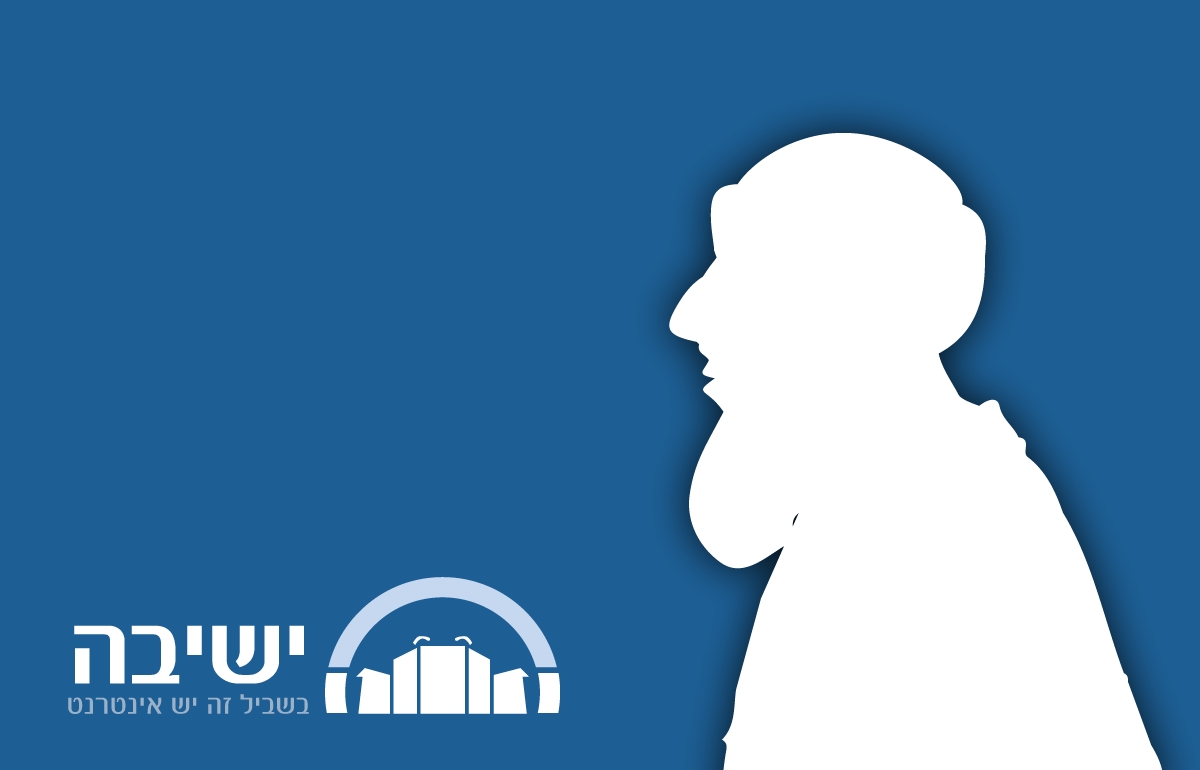
The Need for a Mechitza Without a Minyan
Rabbi Daniel Mann | 5775
